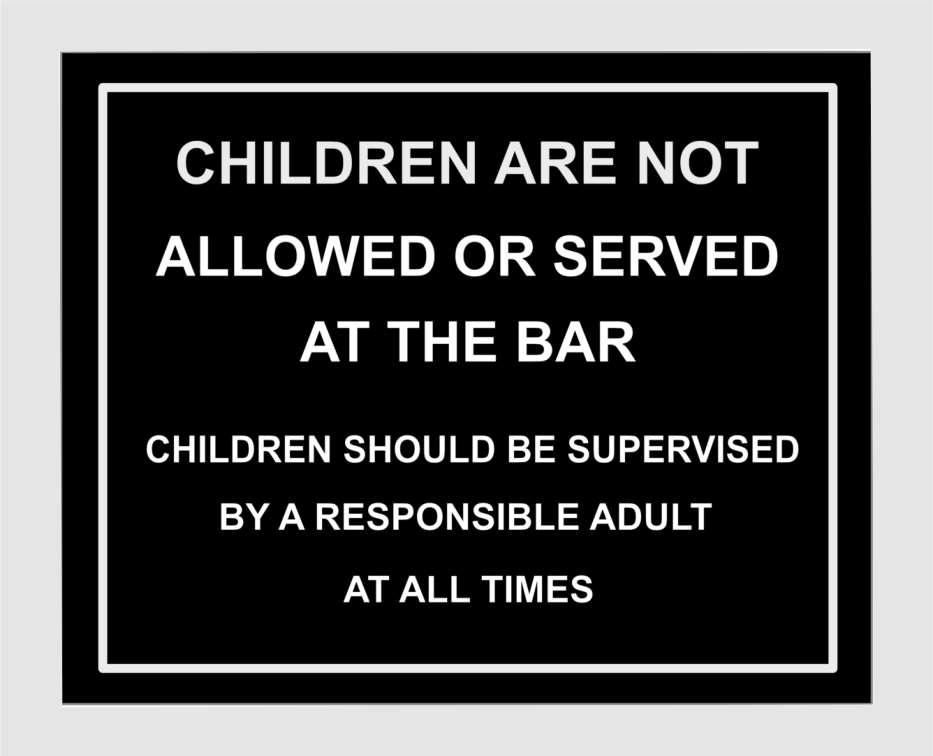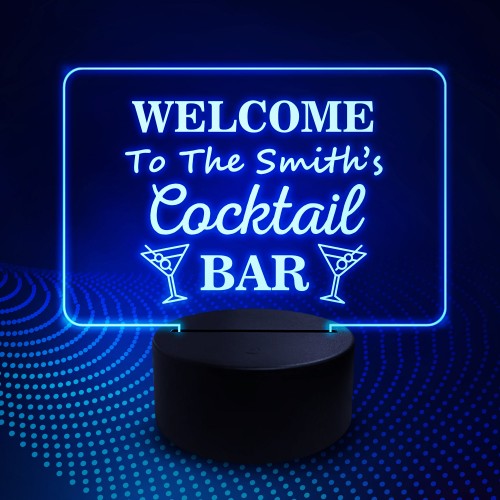Good Tips On Selecting Pub Signs
What Is The Difference Between Size Of The Bar Sign?In accordance with their intended purpose the design aesthetic, their location and placement, bar signs are different in terms of size. This is a brief overview of the impact of size differences on the functionality and appeal of bar signage: 1. Large Signs
Use to bring attention to an region and to serve as a focal point.
Uses: Exterior signs that are main branding signs, or feature walls.
Placement is typically in front of entrances, outside bars, or on large walls to attract patrons.
Examples: Big neon signs, vintage-style signs or mural-type signs.
2. Medium Signs
Uses: Provide information or decorate the room without being overpowering.
Applications: Menu boards, and directional signage.
Placement: Positioned in a manner that is easily visible but not overwhelming. For instance behind the bar, over seating areas, or on walls that are feature.
Signs with decorative designs or metal signs to advertise your bar.
3. Small Signs
The purpose is to add subtle decorative elements or to give specific details.
Uses for table signs, decorative pieces, or labels.
Placement: Tables, shelves or displays that permit close-up views.
Examples include table number signs or frames with quotes.
Size Factors
Visibility
Large Signs: Made to be visible from a distance, making the perfect choice for attracting people as well as establishing the bar's presence.
Medium Signs They are perfect to ensure visibility while maximizing space effectiveness, and also providing vital information without overwhelming decor.
Small Signs: Ideal for intimate information or close-up details. Helps enhance the customer's experience by putting them near the eyes.
Proportion
Large Signs: They need to be proportionally large in order so as to not overwhelm smaller spaces. Ideal for large or open spaces.
Medium Signs: Perfect for most spaces, and can be placed in a variety of ways.
Small signs: Ideal to add details and can be tucked away in smaller spaces without clutter.
Impact
Signs are large and bold. They stand out. Most often, they are employed to set the mood for the bar.
Medium Signs (Medium Size): Strikes balance between visual appeal and decor. Helps create a sense of ambience while also providing important information.
Small Signs: Provides beauty and details, which contributes to a multi-layered and rich visual experience.
Practicality
Because of their dimensions, large signs can be expensive.
Medium Signs are easier to set up and move. They also provide the flexibility to make design modifications.
Small Signs: Easy to change and update They are ideal for dynamic environments like bars where the menus or promotions change frequently.
Functionality
Large Signs: Mainly used to increase visibility and attract attention.
Medium Signs: They're both decorative and functional. They provide essential information, but also enhance the aesthetics.
Small Signs: Mainly used to provide information in a clear manner, they contribute to the overall theme and decor with a subtle approach.
Choosing the right size for bar signs is based on the function they're intended for and the layout of the space, and the desired impact on the patrons. Balance these elements to ensure the signs are contributing effectively to the ambience of the bar as well as the operational requirements of the bar. Check out the most popular weblink about hanging signs for website advice including signs for garden bar, garden bar sign personalised, home bar pub signs, personalised outdoor bar signs, hanging pub signs for sale, staying inn sign, garden bar signs, hanging home bar signs, bar sign outdoor, the staying inn pub sign and more.

What Is The Main Difference Between Bar Signposts And Other Signage In Light?
Lighting can have a major impact on bar signs, which includes their general impact, visibility and atmosphere. Here are the key ways that lighting changes affect bar signs: 1. Neon Signs
Characteristics: Bright, colorful, classic.
Lighting: Make use of neon gas-filled tubes that emit light when charged.
Uses: Ideal for creating a retro or vintage look. Often used for bar names and logos.
Advantages: Visible even at a distance and is a touch of nostalgia.
Advantages: They can be damaged and be costly to repair.
2. LED Signs
Characteristics: Energy-efficient, versatile, modern.
Lighting: LEDs create bright, vibrant light.
Applications: Both outdoor and indoor signs can be used, as well an adjustable display and dynamic lighting effects.
Benefits include being long-lasting, energy efficient. Animations as well as color changes can be programmed.
Advantages: May be expensive initially, but it can also reduce energy and maintenance costs.
3. Backlit Signs
Characteristics: Elegant, sophisticated, subtle.
Lighting: Puts lighting with fluorescent or LEDs behind a translucent surface to create a soft glow.
Applications: Used for modern bar signs menu boards, branding elements, etc.
Benefits: Increases the reading ability of small print in low-light conditions.
The disadvantages are the complexity of installation and higher upfront cost.
4. Signs that Edge-Lit
Characteristics: Sleek, contemporary, stylish.
Lighting: Illuminates the edges of a sign panel usually acrylic, using LEDs.
Applications: Excellent for modern minimalist designs, commonly employed for informational or directional signs.
Advantages Gives a refined and distinctive look.
Limitation to certain design styles.
5. Ambient/Accent Lighting
Characteristics: Subtle, atmospheric, decorative.
Lighting: Light sources that are indirect are used to enhance or highlight the appearance of signs.
Applications: Improves ambience and can be used to showcase art or theme decor.
Benefits: It adds depth and ambience, and can create an inviting and warm atmosphere.
Insufficient direct light to read.
6. Marquee Signs
Characteristics: Bold, theatrical, eye-catching.
Lighting: Use several lights or LEDs along the edge of the sign.
Uses: Used as exterior signs, for event promotions and to create the look of a vintage.
Benefits: Very visible and attention-grabbing.
It can be costly to keep up and is a routine task.
7. Projection Signs
Characteristics: Dynamic, innovative, versatile.
Lighting: The use of projectors for the projection of light and images on a surface or wall.
Uses: Perfect for promoting occasions, temporary displays and other dynamic displays.
Advantages: Easy to change and there is no structure required.
Disadvantages
8. Fluorescent Signs
Characteristics: Bright, cost-effective, traditional.
Lighting: The use of fluorescent tubes for illumination.
It is commonly used to create larger indoor or outdoor signs.
Benefits: Bright, efficient and affordable for large-scale signs.
Advantages
Lighting Things to Consider
Visibility
Neon and LED Signs can be used to getting the attention of passers-by who are far away, particularly when it is dark.
Backlit and Edge-Lit Signs can be used to improve visibility and creating an elegant look.
Energy Efficiency
LED signs are energy efficient and long-lasting.
The neon and fluorescent signs are more energy efficient, while neon is more fragile.
Aesthetic Appeal
Neon signs and marquees are ideal for vintage and retro aesthetics.
Edge-lit and Backlit Signs Ideal for modern, clean designs.
Ambient Lighting: Improves the general atmosphere and ambience.
Maintenance
LED Signs: Low Maintenance and long-lasting.
Neon & Fluorescent Signs require frequent maintenance and repair.
Cost
LED and Backlit Signs Higher upfront costs but lower operating costs.
Fluorescent Signs: Less initial cost, but higher energy costs.
Flexibility
Projection and Programmable Signs: The highest flexibility for moving displays and dynamic content.
Traditional Signs: They're more rigid, however they usually achieve a certain appearance.
When choosing the appropriate type and color of lighting Bar owners can enhance the visibility of their establishment and create an ideal atmosphere, as well as effectively promote their brand and advertising messages. View the best what do you think for bar hanging sign for site advice including hanging tavern sign, the staying inn sign, pub sign hanging, pub signs to buy, bar signs for home bar, home garden bar signs, bar sign hanging, personalised pub signs, personalised metal pub signs, pub signs and more.

How Do Bar Signs Differ From One Another In The Context Of Regulations?
Bar signs are subjected to a variety of regulations by state, local and federal authorities in order to ensure security for the public and aesthetic standards, as well as compliance with zoning law. These are the main differentiators between bar signs as well as their rules. There are regulations regarding the size and location of signs.
Zoning laws: These regulations determine where signs may be placed, their size, distance, and height and the distance between them and property lines, roadways or other structures.
Historical Districts: Limitations may be in place to protect the historical characteristics of specific areas that limit the design, size, and materials of signs.
2. Illumination Restrictions
Light Pollution: Regulations may limit the brightness, color and duration of illuminated signs to minimize light pollution while also preserving the nighttime atmosphere.
Safety considerations Signs should not cause glare or distract pedestrians or drivers particularly when they are placed close to the road.
3. Content from the Signage
Alcohol Advertising: Alcohol advertisements are restricted in certain jurisdictions. They are prohibited from using images or content which may be attractive to minors, or promote excessive drinking.
Health Warns: Certain laws could require that signs include warnings about the risks of drinking alcohol or smoking cigarettes.
4. Historic Preservation Regulations
Signs that are placed in historical districts must be in line with their architectural style. This is usually performed by preservation boards or commissions.
Materials and Design - Restrictions may be placed on the designs, materials or color schemes to protect the historical integrity.
5. Sign Permitting Process
Permit Requirements: Bar owners must obtain permits before installing or changing signs. This could require the submission of plans, payment of fees, and getting approval by local authorities.
Code Compliance: Signs have to conform with the building codes as well as fire safety rules, as and accessibility standards in order to maintain public safety and ensure accessibility for people who are disabled.
6. Maintenance of Signs and Removal
Maintenance requirements: It is the responsibility of bar owners to keep their signage in good shape. This includes making sure they are structurally sound, safe and in compliance with all regulations.
Signs that have been abandoned: There could be rules that govern the removal or elimination of abandoned or decrepit signs to preserve the beauty of the area and prevent blight.
7. Digital Signage Regulations
Content Restrictions: Laws can govern the content displayed on digital signage, prohibiting certain types of content such as flashing lights, or offensive imagery.
Operational Limits Regulations may restrict the brightness of digital signs, frequency and motion to reduce visual obstructions.
8. Penalties and enforcement
Inspections: Local authorities conduct periodic inspections to ensure the compliance of signage regulations, issuing citations for violations.
Penalties - Penalties can include fines or court orders, requests for signs to be removed or modified as well as legal actions.
9. Sign Process
Variance applications: Bar owners who wish to alter their signage in accordance with the rules can do so by submitting a request for a variance. The reason for the variance must be given along with any adverse impact on the public's security or appearance must be mitigated.
Public input: Some changes might require public meetings or input from local community, owners of property living in close proximity, or from business organizations.
10. Community Input and Engagement
Public Consultation - Certain communities include community members as part of the design and the implementation of signage regulations through holding public meetings or surveys.
Community Benefits : Sign Regulations could contain provisions to help promote local businesses or revive the neighborhood.
By adhering and understanding the guidelines for signage Bar owners will be able to ensure that their signs add visual appeal to their establishments, make a positive contribution to the local community, and meet legal specifications. This helps reduce the chance of fines, legal issues or penalties. See the best twofb.com bar signs for blog tips including bar sign outdoor, the staying inn sign, pub signs made, personalised hanging bar sign, signs for garden bar, hanging pub signs, a bar sign, bar hanging sign, personalised pub signs for garden, bar signs for home and more.
